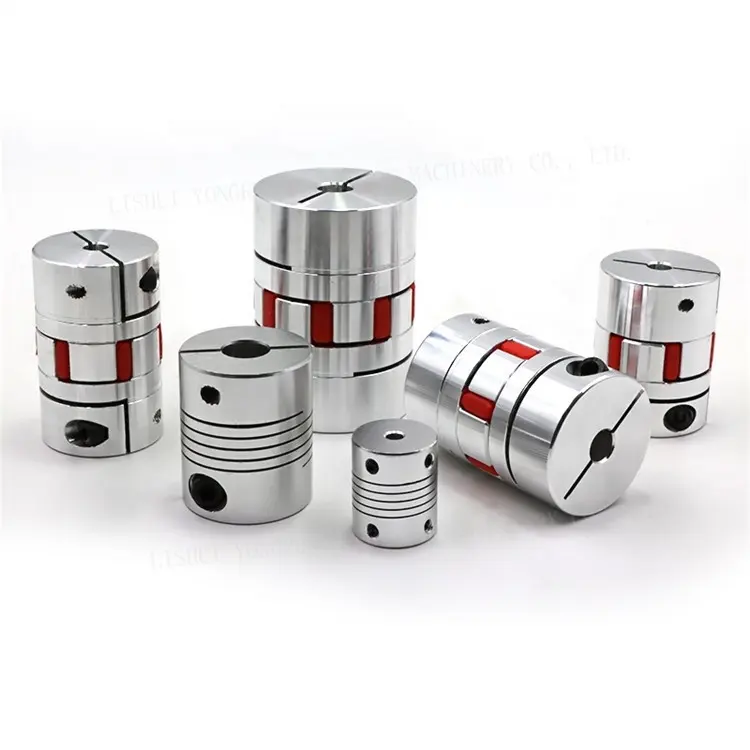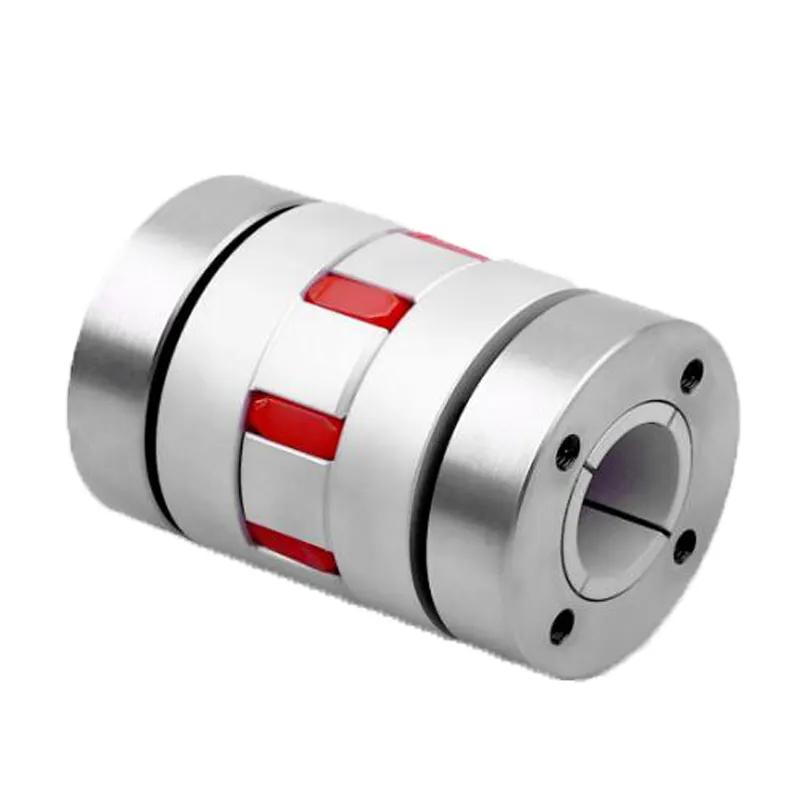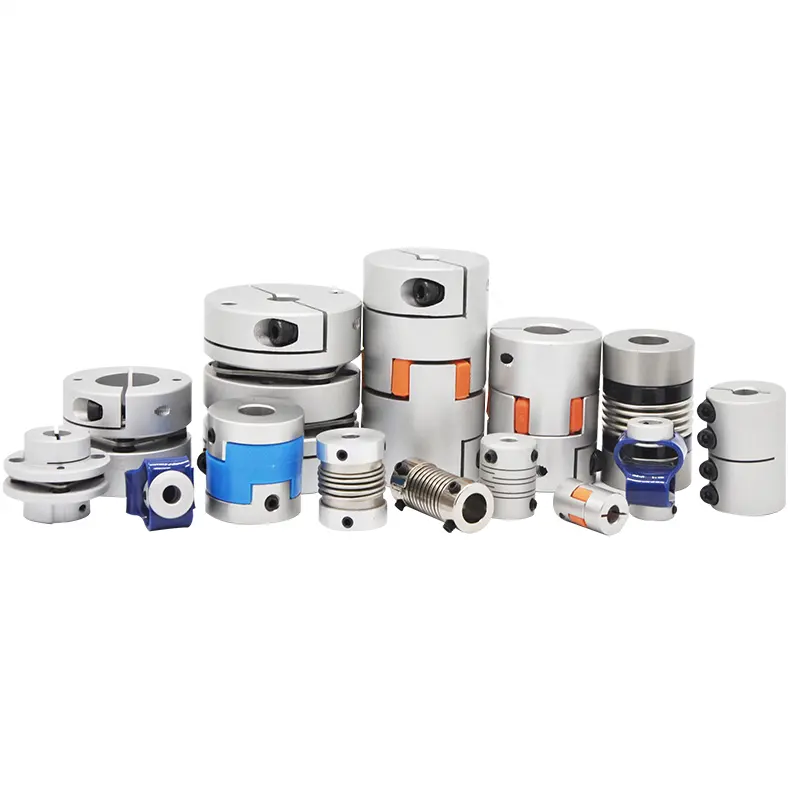Product Description
Rubber Spider Coupling Characteristic:
1. Performance Shock Absorber
2. Low Compression Deformation
3. Corrosion Resistance
4. Oil Resistance
5. High Pressure Resistance
6. Wear Resistance
Rubber Material Compare
| E - Excellent G - Good F - Fair P - Poor | |||||||||||
| Material Properties | |||||||||||
| Property | NBR | EPDM | CR | Silicone | FKM | NR | SBR | PU | HNBR | FVMQ | IIR |
| Abrasion Resistance | G | G | G | P | G | E | E | E | G | P | G |
| Acid Resistance | F | G | F | F | E | F | F | P | E | F | G |
| Chemical Resistance | F | E | F | G | E | F | F | F | G | E | E |
| Cold Resistance | G | G | F | E | P | G | G | G | G | G | G |
| Compression Set Resistance | G | G | F | G | E | G | G | F | G | G | F |
| Dynamic Properties | G | G | F | P | G | E | E | E | G | P | F |
| Electrical Properties | F | G | F | E | F | G | G | F | F | E | G |
| Elongation | G | G | G | F | F | F | F | F | G | F | G |
| Flame Resistance | P | P | G | F | E | P | P | P | P | G | P |
| Heat Resistance | G | G | G | E | E | F | F | F | E | E | G |
| Impermeability | G | G | G | P | G | F | F | G | G | P | E |
| Oil Resistance | E | P | F | F | E | P | P | G | E | G | P |
| Ozone Resistance | P | E | G | E | E | P | P | E | G | E | G |
| Tear Resistance | F | G | F | P | F | G | G | G | F | P | G |
| Tensile Strength | G | G | G | P | G | E | E | E | E | F | G |
| Water Resistance | G | E | F | G | F | G | G | P | E | F | G |
| Weather Resistance | F | E | E | E | E | F | F | E | G | E | G |
Why Us:
We have a fully-equipped workshop that meets ISO 9001:2015 and IATF 16949:2016 requirements. All products are compliant
with FDA, WRAS, UL, RoHS and REACH standards, and meet DIN, JIS and ASTM regulations. Material report and dimension
checking report are available.
1. Quality Approvals. More than 15 years professional manufacture experience.
2. Experienced Staff and Service. Professional R&D team, production team, sales team, after-sales service team.
3. Product Performance and affordable cost. Superior performance with most competitive price.
4. Prompt Delivery. Faster delivery time.
5. Small Orders Accepted.
| Material | Rubber Metal Bonded, NR Rubber, SBR Rubber, Carbon Steel, Stailess Steel |
| Material Report | FDA, ROHS, UL, WRAS and REACH |
| Dimension | Standard Sizes or As per customers' Requirement |
| Certifications | ISO9001,IATF16949,ISO14001 |
| Color | Any colors according to PANTONE or RAL |
| Surface Finish | Texture (VDI/MT standard, or made to client's sample), polished (high polish, mirror polish), smooth, painting, powder coating, printing, electroplating etc. |
| Service | Custom Made or OEM and ODM |
| Free Samples | Okay |
| Production Ways | CAD Drawing, 3D Files or Samples |
| Production Capacity | 200T,300T and 500T Compressing Molding, Injection Molding, Auto Vacuum Vulcanizing, Plastic Injection, and Extrusion |
| Supplying Capacity | One Million Pieces/ Month |
| Tolerance | Generally±0.05mm or Better |
| QC | PPAP, In House Control, Third Party Inspection Institution such SGS, TUV |
| Lead Time | 15 Days for Molding, 15-20 Days for Series Production |
| Application | Industry Machinery,Automotive,Mechanical Equipment, Construction, House Application, Medical Machine |
| More Parts |
Grommet, sleeve, feet, gasket, wheel, bellow, cap, dust cover, pad, washer, Strip, plug, stopper, grip, seal, bushing, bumper, blocks, and anti vibration mounts etc. |
Supplying Standard and Customized Rubber & Plastic Parts
Established in 2004, Xihu (West Lake) Dis. Rubber is specialized in providing quality customized rubber molding,
extrusion parts, plastic injection products and some standard parts.
Meeting Various Standards
We have a fully-equipped workshop that meets ISO 9001:2015 and IATF 16949:2016 requirements.
Our products are compliant with FDA, WRAS, UL, RoHS and REACH standards, and meet DIN, JIS
, BS and ASTM regulations.
Parts include, but are not limited to:
Grommet, sleeve, feet, gasket, wheel, bellow, cap, dust cover, pad, washer, Strip, plug, stopper, grip,
seal, bushing, bumper, blocks, and anti vibration mounts etc.
FAQ
1. What types of rubber do you use?
Xihu (West Lake) Dis. Rubber has extensive experience in a vast range of rubber, including: Natural Rubber, SBR, CR, NBR, HNBR,
EPDM, Silicone Rubber, FPM, ACM, FK etc.
2. What types of plastic do you use?
Xihu (West Lake) Dis. Rubber has extensive experience in a vast range of plastics, including: ABS, Polypropylene (PP), PVC, POM,
PE, PEEK, Polyamide (PA) Nylons, PBT, etc.
3. What services do you provide?
We offer a broad range of services, including, Custom Rubber Molding, Liquid Injection Molding, Rubber Extrusion, and
Rubber/Plastic to Metal Bonded Parts.
4. Why us?
4.1 More than 15 years professional manufacture experience.
4.2 Professional R&D team, production team, sales team, after-sales service team.
4.3 Superior performance with most competitive price.
4.4 Faster delivery time.
5. Perfect quality control process
5.1 Raw material inspection
All raw materials before warehousing must be tested, and the corresponding physical property report shall be issued,
and compared with the physical property report of raw materials. Only when the test values of the 2 physical property
reports are consistent, can they be warehoused.
5.2 Mold inspection
After mold development or cleaning, we will check the full size of the mold to ensure that the quality of each cavity is
the same.
5.3 Product inspection
In the process of product production, inspectors regularly inspect the semi-finished products to ensure the rationality
of the process and control the defective rate within a reasonable range.
5.4 Finished product inspection
The double inspection can ensure that the product appearance and size are 100% qualified.

Electrical Insulation in Jaw Couplings
Jaw couplings are designed to provide mechanical connection between two shafts while also maintaining electrical insulation. This feature is essential in applications where the connected shafts have different electrical potentials or where electrical isolation is required to prevent current flow between the shafts.
The electrical insulation in jaw couplings is primarily achieved through the use of non-conductive materials for the jaw components. The jaws of the coupling are typically made from materials such as elastomers or plastics, which are excellent electrical insulators. These non-conductive materials prevent electrical conduction between the two shafts, even if they are made from different conductive materials.
Additionally, the design of the jaw coupling ensures that the two shafts do not come into direct electrical contact with each other. The jaws of the coupling create a gap between the shafts, which further enhances the electrical insulation.
It's important to note that while jaw couplings provide electrical insulation, their primary function is to transmit torque and accommodate misalignment between shafts. If specific electrical insulation requirements are critical for an application, additional measures such as insulating sleeves or shaft grounding may be necessary in conjunction with the jaw coupling.
Overall, jaw couplings are a reliable and widely used choice for mechanical power transmission while ensuring electrical isolation between connected shafts.

Can jaw couplings be used in marine and automotive applications?
Yes, jaw couplings can be used in both marine and automotive applications, and they have proven to be effective in various scenarios within these industries. Here's how jaw couplings are utilized in marine and automotive settings:
Marine Applications:
In the marine industry, jaw couplings are commonly used to connect the engine to various components, such as propellers, pumps, generators, and auxiliary equipment. They offer several advantages that make them suitable for marine applications:
- Corrosion Resistance: Marine environments are exposed to saltwater and other corrosive elements. Jaw couplings made from materials such as stainless steel or other corrosion-resistant alloys can withstand these harsh conditions and ensure long-lasting performance.
- Misalignment Compensation: Vessel movement and hull flexing can lead to misalignment between the engine and driven components. Jaw couplings can accommodate both angular and parallel misalignment, ensuring efficient power transmission even in dynamic marine conditions.
- Vibration Damping: The elastomer spider in the jaw coupling absorbs vibrations generated by the engine and other equipment, contributing to smoother operation and reduced wear on the components.
- Compact Design: Space is often limited on boats and ships. Jaw couplings have a compact and lightweight design, making them suitable for applications with space constraints.
Automotive Applications:
In the automotive industry, jaw couplings are used in various applications, including power steering systems, engine-driven accessories, and HVAC blowers. They offer several benefits for automotive applications:
- Misalignment Compensation: Jaw couplings can handle small misalignments that can occur due to engine movements or assembly tolerances, ensuring reliable power transmission and reducing stress on the drivetrain.
- Vibration Damping: The elastomer spider in the jaw coupling dampens engine vibrations, contributing to a smoother and quieter ride for passengers.
- Compact and Lightweight: In modern vehicles, lightweight components are essential for fuel efficiency and overall performance. Jaw couplings' compact design and low inertia make them suitable for automotive applications.
- Cost-Effectiveness: Jaw couplings are often more cost-effective compared to some other coupling types, making them a popular choice for automotive applications where cost considerations are essential.
In conclusion, jaw couplings are versatile and can be successfully used in marine and automotive applications. Their ability to handle misalignment, dampen vibrations, and provide efficient power transmission makes them reliable components in various dynamic and demanding environments.

How Does a Jaw Coupling Protect Connected Equipment from Shock Loads and Vibrations?
Jaw couplings are designed to provide some level of flexibility, which allows them to absorb shock loads and dampen vibrations in mechanical systems. The unique design of jaw couplings contributes to their ability to protect connected equipment in the following ways:
- Spider Element: The spider element, typically made of elastomeric material, serves as a mechanical fuse in the jaw coupling. When the system experiences shock loads or vibrations beyond the coupling's rated capacity, the spider element can deform or fail in a controlled manner, protecting the connected components from damage.
- Torsional Wind-Up: In the presence of torsional vibrations or sudden torque fluctuations, the elastomeric spider can act as a torsional buffer, absorbing and dissipating the energy to prevent it from reaching the connected equipment.
- Misalignment Compensation: Jaw couplings can tolerate a degree of angular, parallel, and axial misalignment between the shafts. This capability helps minimize stress on the connected components in situations where misalignments might occur due to external forces or dynamic operating conditions.
- Reduction of Resonance Effects: The flexibility of jaw couplings can help mitigate resonance effects that may arise in the system, reducing the risk of resonance-related failures or damages.
It's important to note that while jaw couplings offer protection against certain shock loads and vibrations, they have their limits. Excessive or repetitive shocks, vibrations, or overloading beyond the coupling's rated capacity can still lead to premature wear or failure. Therefore, it is essential to select the appropriate size and type of jaw coupling for the application and regularly inspect the coupling for signs of wear or damage. Regular maintenance and inspection help ensure the jaw coupling continues to provide reliable protection to the connected equipment.


editor by CX 2023-08-16
